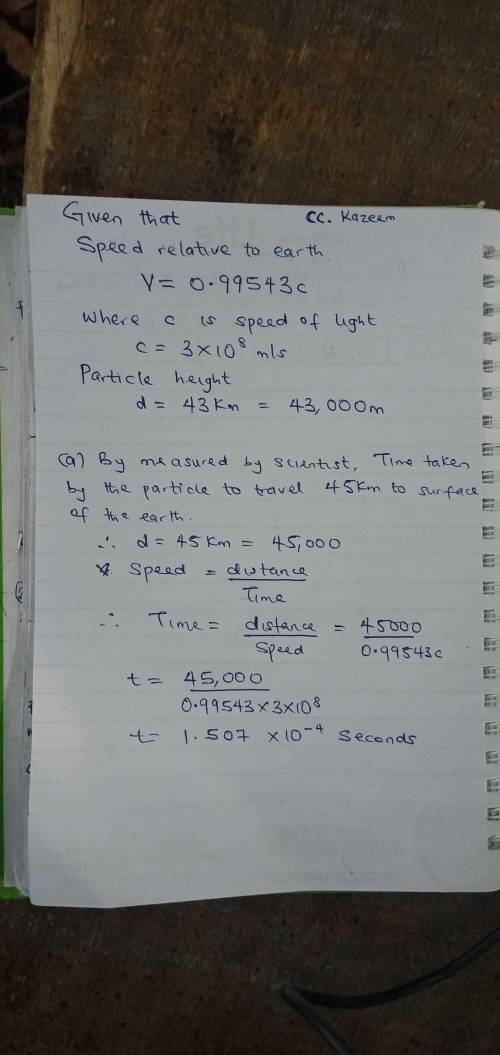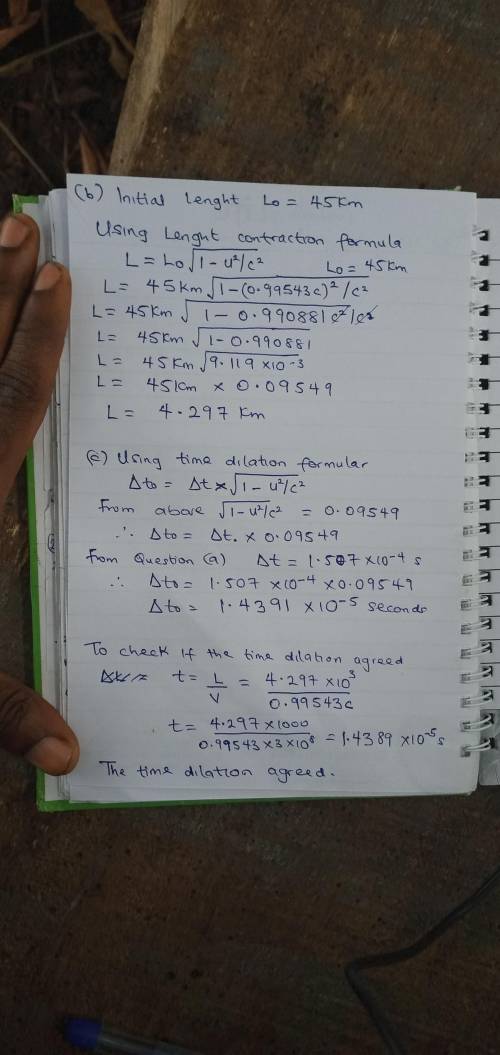
Physics, 21.04.2020 18:06 emmmssss21
An unstable particle is created in the upper atmosphere from a cosmic ray and travels straight down toward the surface of the earth with a speed of 0.99543c relative to the earth. A scientist at rest on the earth's surface measures that the particle is created at an altitude of 43.0 km .
(a) As measured by the scientist, how much time does it take the particle to travel the 45.0 km to the surface of the earth?
(b) Use the length-contraction formula to calculate the distance from where the particle is created to the surface of the earth as measured in the particle’s frame.
(c) In the particle’s frame, how much time does it take the particle to travel from where it is created to the surface of the earth? Calculate this time both by the time dilation formula and from the distance calculated in part (b). Do the two results agree?

Answers: 2
Another question on Physics

Physics, 22.06.2019 07:30
Automobile fuel efficiency is often measured in miles that the car can be driven per gallon of fuel (mpg). heavier cars tend to have lower fuel efficiencies (lower mpg ratings). which variable (weight or fuel efficiency) is most naturally considered the explanatory (predictor) variable in this context?
Answers: 3

Physics, 22.06.2019 11:50
Amoving electron has kinetic energy k1. after a net amount of work w has been done on it, the electron is moving one-quarter as fast in the opposite direction. (a) find w in terms of k1. (b) does your answer depend on the final direction of the electron's motion?
Answers: 2

Physics, 22.06.2019 22:00
Aspaceship starting from a resting position accelerates at a constant rate of 9.8 meters per second per second. how far will the spaceship travel if its final speed is 1 percent the speed of light (300,000,000 m/s)? a. 3.1 × 106 m b. 2.94 × 108 m c. 7.8 × 1010 m d. 4.6 × 1013 m
Answers: 1

Physics, 22.06.2019 22:50
Cyclotrons are widely used in nuclear medicine for producing short-lived radioactive isotopes. these cyclotrons typically accelerate h- (the hydride ion, which has one proton and two electrons) to an energy of 5 mev to 20 mev. this ion has a mass very close to that of a proton because the electron mass is negligible—about 1 2000 of the proton’s mass. a typical magnetic field in such cyclotrons is 1.9 t. (a) what is the speed of a 5.0-mev h-? (b) if the h- has energy 5.0 mev and b = 1.9 t, what is the radius of this ion’s circular orbit?
Answers: 1
You know the right answer?
An unstable particle is created in the upper atmosphere from a cosmic ray and travels straight down...
Questions
























